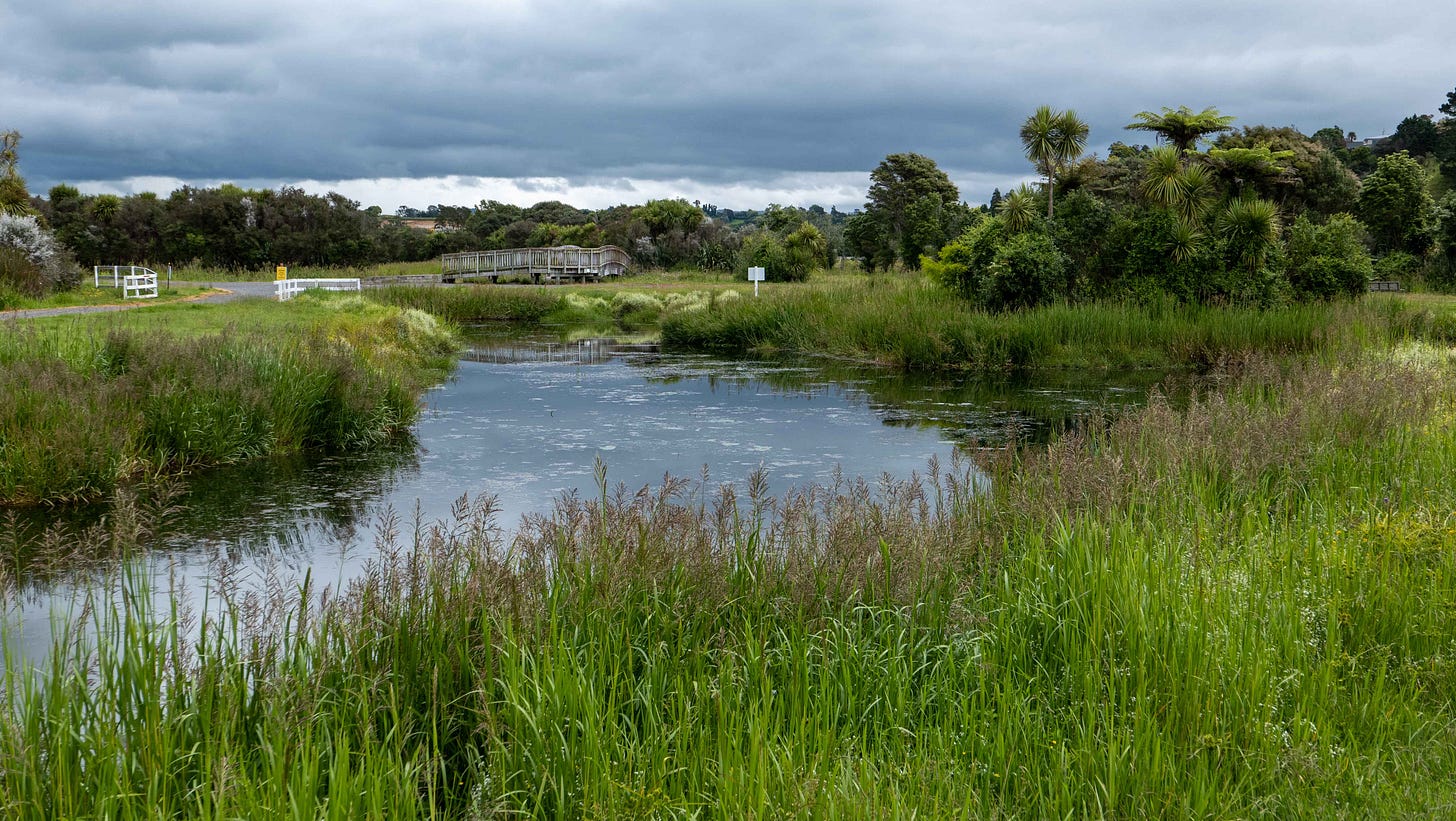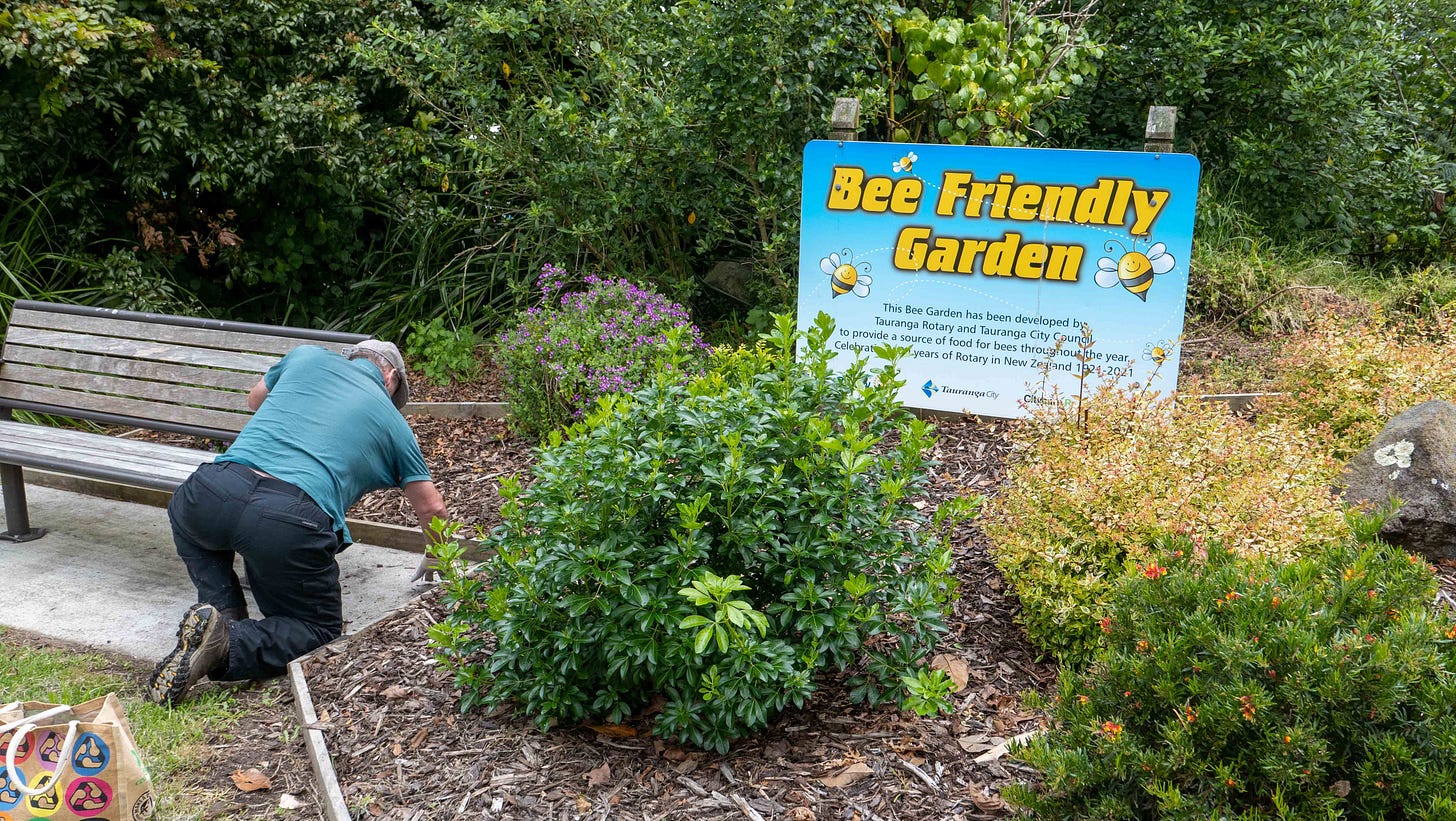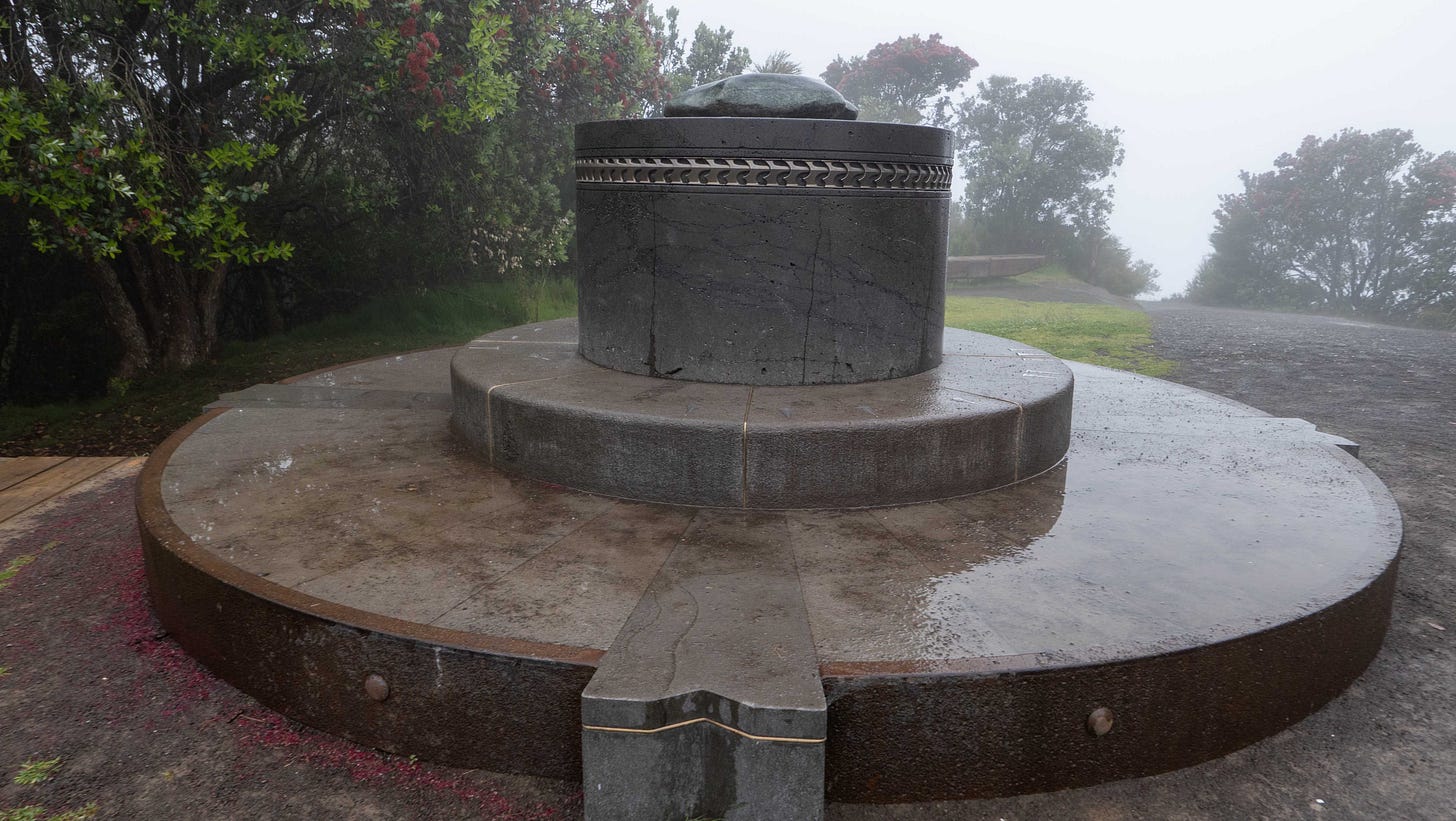Tauranga
On being part of a global network, tackling massive projects with your community group and learning that the view isn’t everything.
Sheena was another experienced Rotary International Travel and Hosting Fellowship host. She made us feel welcome in her home and had her fridge filled with goodies she thought we would enjoy. She knew we were interested in experiencing New Zealand from a local’s perspective and researching Rotary projects, so she introduced us to some of her friends who could help with this. On our final night, we all had dinner with Vanessa and Larry again, our hosts from a couple of weeks ago. You can read about that part of our journey here:
Heading South
On the buses A 4am start heralded the start of our journey south. We threw ourselves out of bed – there’s no other way to do it if you’re getting up that early – and hopped into the car for the first leg of the journey. We had already (at great cost) been caught out with the ever-changing speed limits in New Zealand, so Mike was careful all the way back t…
This trip around New Zealand has been about making friends and gathering ideas about amplifying our positive impact as much as it has been about exploring the country.
Kopurererua Valley Reserve – a huge undertaking
‘We had 700 volunteers here. They planted 10,000 trees in an hour and a half!’
Mark has been involved in the Kopurererua Valley Reserve since the local council was trying to work out how they could fund the ecological restoration work. One of the council staff was also a Rotarian and hatched a plan. If the local Rotary clubs created a trust, they could apply for funding that wasn’t available to the council directly. That was 20 years ago. Since then, Rotarians have been applying for funding as needed and providing volunteers for planting projects.
The first trees that were planted were now growing strongly. The white pines were beginning to catch up with the smaller trees, ready to overtake them and create the planned overstorey. Everything was looking lush and happy. The most recent plantings were from just a few months ago, small shrubs barely showing above the height of the grass.
This reserve has been created in response to the need to upgrade the road that ran down the valley. At the time, the river had been straightened and canalised. The council wanted to cut through a small section of a pā (fortified hill). In response, the local iwi (Māori tribe) made a deal with them; that the previously canalised river was to be returned to its original course, winding through the valley bottom. This is an excellent example of the Māori philosophy of environmental protection being enacted on the ground, and the river now meandered as it should. This has created a wider range of habitats for water fauna and slowed the water down, helping to reduce downstream flooding.
The local Rotary clubs have provided funding for the trees and several bridges, and share the job of setting traps for introduced predators. The valley park is 300 hectares (740 acres), and the project has planted 750,000 trees to date. Much of the valley has not yet been touched; this is a large-scale, long-term project.
‘How do you sell such a big project to your Rotary club members without scaring them off?’ Mike enquired. The answer was simple. ‘You don’t. You just consider what you can achieve, one year at a time.’
But size isn’t everything. At the other end of the scale, the same Rotary Club has supported the creation of a tiny bee-friendly garden in one corner of an urban park, with shrubs that flower over the winter months when bees most need the nectar. We spent a few minutes in this tiny haven, helping with the weeding and removing some litter.
Tramping up the Mountain
For some reason, New Zealanders ‘tramp’ rather than ‘hike’ or ‘ramble’. Luckily for us, Sheena is a tramper and introduced us to her local area, partly on foot.
The park below her house is a valley filled with native bush, alongside some introduced species like alder. Mike was still recovering from the killer bug he picked up at Lower Kaimai, so we took a gentle walk through the lush growth, following the line of the stream.
The next day, Mike was feeling good enough to consider hiking up the local mountain, a volcano linked to the mainland by an isthmus. The weather forecast was dry but dull. That would do – when the sun shines here, it’s sweltering. As Sheena reversed out of the garage, the windscreen was spattered with elongated drops of water.
‘Maybe we need our coats!’ She drove back in, and we retrieved an additional layer from the house. By the time we arrived at The Mount (officially Mount Maunganui or Mauao), the rain looked like it was settling in, but the top was still visible. We headed up the steep slope, looking forward to the view back over the city and across the bay. Every now and again, we stopped on the way up to ‘admire the view’. Oh, shucks, we couldn’t use that excuse for catching our breath – there was no view! Up and up we climbed, through the New Zealand Christmas Trees (pohutukawas), resplendent with their deep red bottle brush flowers, towards the summit.
As the vegetation changed, so did the weather.
‘We’re in cloud now.’ Mike was right. Our range of vision had shrunk to just a few metres as we pushed on up the last few metres.
An old stone and mortar cairn stands at the top of the path, accompanied by a far more impressive modern memorial. A cylinder of greystone supports a polished lump of pounamu – a form of jade found only on the South Island that is considered a treasure (taonga) by Māori people. Arrows point to significant Māori sites on the mound.
‘The greenstone sounds different to the greystone when I knock on them. Do you think it’s fake?’ I’m not sure whether Mike was being serious, but they did have different tones. ‘Definitely not!’ A chorus of voices replied.
‘The tops of hills are sacred Māori sites. Fake pounamu would be deeply disrespectful.’
Not having a view from here meant that I focussed more closely on the memorial. I felt the connection between this ancient Māori pā and the people who once occupied it. Perhaps if we had been able to see for miles around, our focus would have been on looking out rather than on the mountain itself. I love seeing spectacular views, but perhaps it’s not all about the view. Perhaps we should spend more time appreciating where we are rather than always looking further afield.
I hope you’ve enjoyed this week’s instalment. Next week, we move on to Napier, where we made more friends, learnt about the flooding from Cyclone Gabrielle in early 2023 and admired the fabulous Art Deco architecture.
An update on subscriptions
Over the past few months, I've been fortunate to share my adventures across New Zealand with you, and I have appreciated your support and ongoing subscription. Writing about the breathtaking places, nature conservation efforts, and the incredible friendships and community actions I've encountered has been an absolute joy.
To continue providing you with the best content and ensure the sustainability of my writing, I will be introducing a new feature in a couple of weeks—a paid subscription plan. From then, any posts over 2 months old will be exclusively available to paid subscribers.
I will continue to send free weekly updates with fresh stories, travel tips and personal insights to all subscribers, whether paid or free. Your presence in this community is incredibly valuable to me, and I want to ensure that everyone can still enjoy the journey together.
For those who choose to become paid subscribers, you'll gain access to all my past content, allowing you to relive the earlier chapters of my travels.
If you have any questions or concerns, please don't hesitate to reach out. And if you would like a paid subscription but can’t afford it right now, please email me at julia@juliags.com and I will set you up with a gift subscription, no questions asked.
Thank you again for being a part of this amazing journey—it wouldn't be the same without you!
Until week,
Julia







